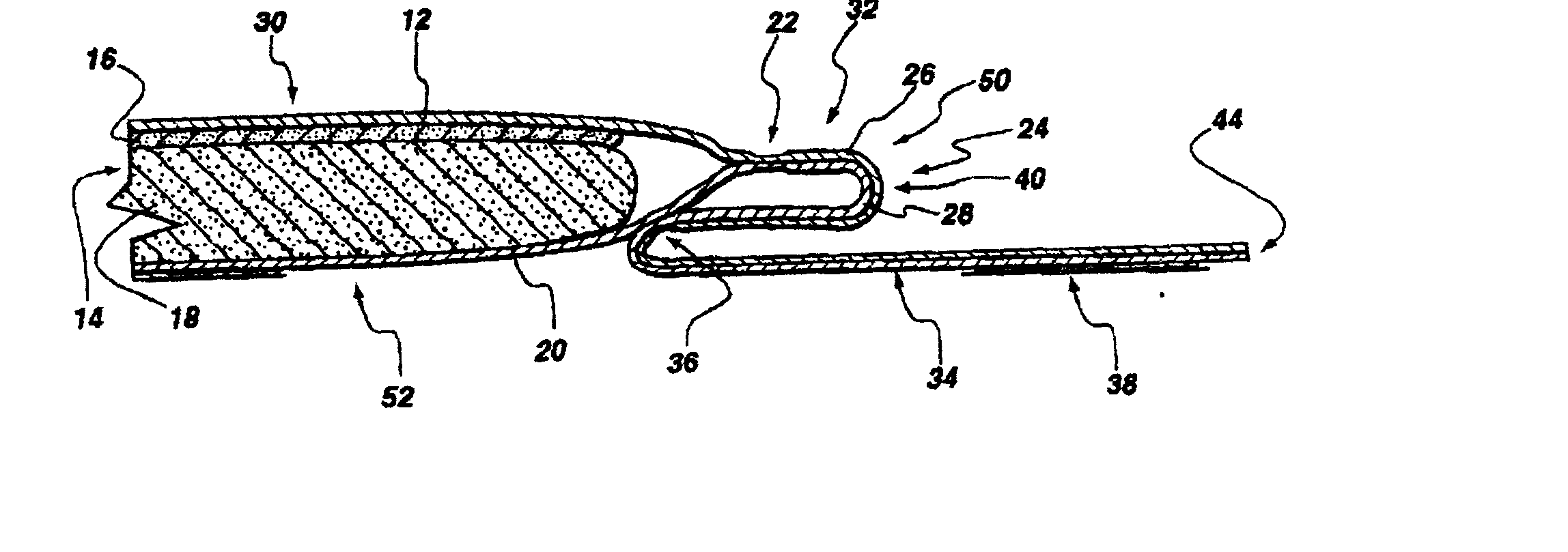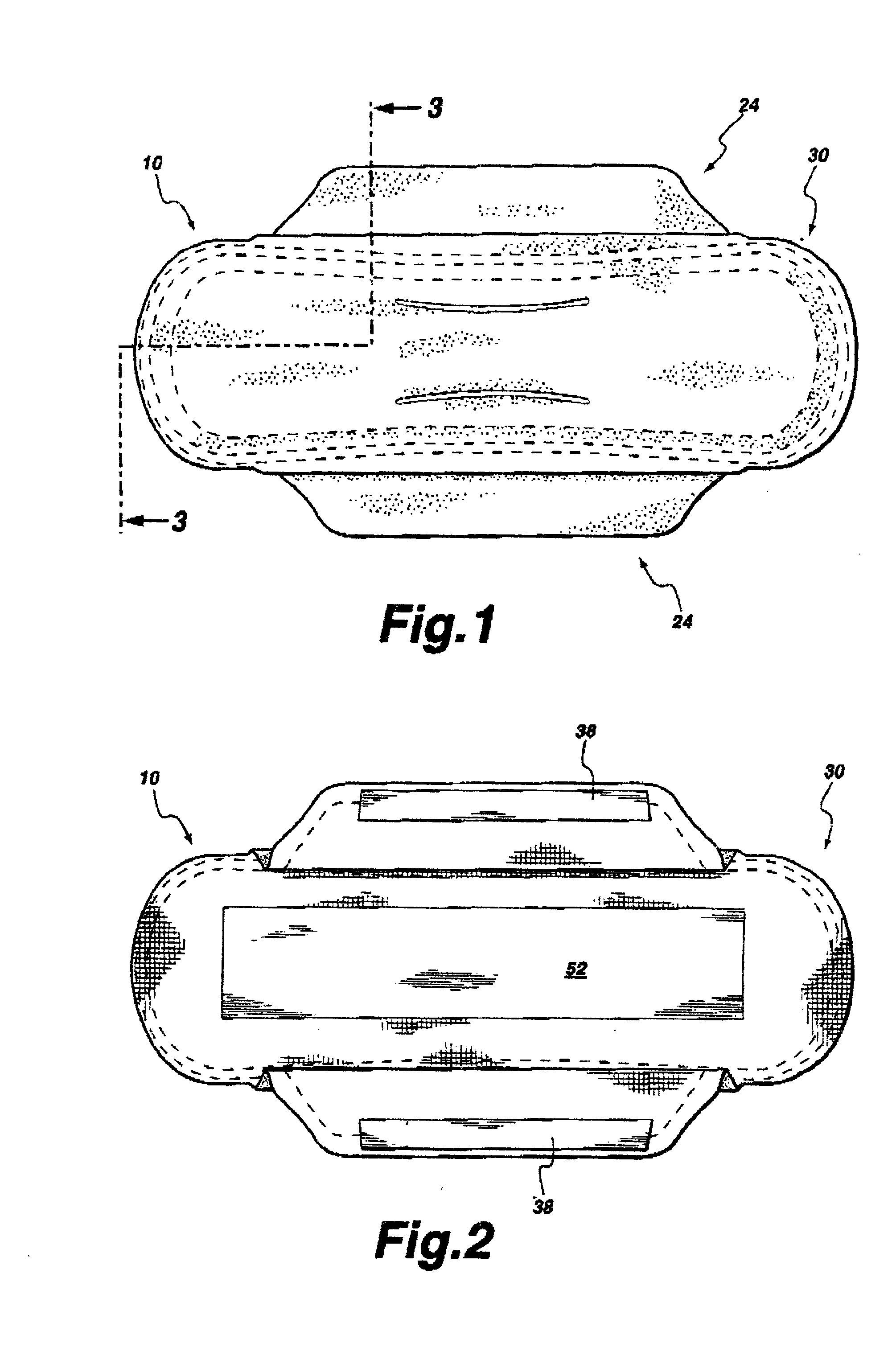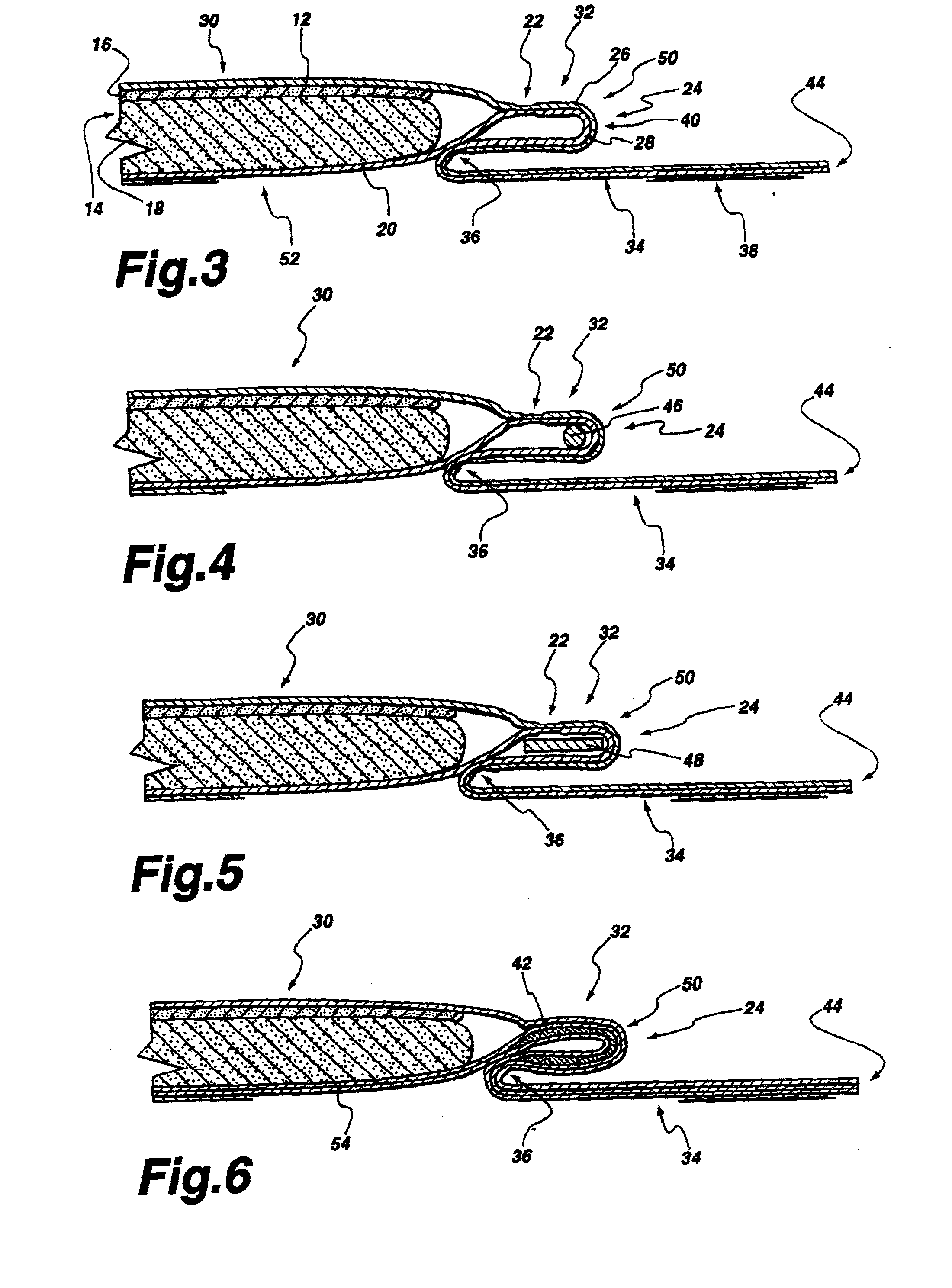Sanitary absorbent article with positioning flaps capable of gathering the undergarment to protect against wetting
a technology of absorbent articles and sanitary napkins, which is applied in the field of sanitary napkins, can solve the problems of product failure, droplets are likely to run off the surface of the cover layer and leak past the edge of the sanitary napkin, and sanitary napkins designed primarily for daytime use have been found to leak mostly at the longitudinal sides of the napkin
- Summary
- Abstract
- Description
- Claims
- Application Information
AI Technical Summary
Benefits of technology
Problems solved by technology
Method used
Image
Examples
Embodiment Construction
[0066] Referring now to the annexed drawings, more particularly to FIGS. 1, 2, and 3, the present invention provides a sanitary napkin which is designated comprehensively by the reference numeral 10 and which is characterized by the ability to better protect the undergarment of the wearer against wetting and soiling by menstrual liquid.
[0067] More specifically, the sanitary napkin 10 comprises a liquid-permeable cover layer 12 overlaying an absorbent system 14. The cover layer may be a relatively low density, bulky, high-loft non-woven web material. The cover layer 12 may be composed of only one type of fiber, such as polyester, or it may be composed of bicomponent fibers having a low melting point component and a high melting point component. The components of bicomponent fibers may be arranged with respect to each other as side by side or one surrounding another as a sheath around a core. Examples of low and high melting components are polyethylene and polyester, polypropylene and...
PUM
 Login to View More
Login to View More Abstract
Description
Claims
Application Information
 Login to View More
Login to View More - R&D
- Intellectual Property
- Life Sciences
- Materials
- Tech Scout
- Unparalleled Data Quality
- Higher Quality Content
- 60% Fewer Hallucinations
Browse by: Latest US Patents, China's latest patents, Technical Efficacy Thesaurus, Application Domain, Technology Topic, Popular Technical Reports.
© 2025 PatSnap. All rights reserved.Legal|Privacy policy|Modern Slavery Act Transparency Statement|Sitemap|About US| Contact US: help@patsnap.com



